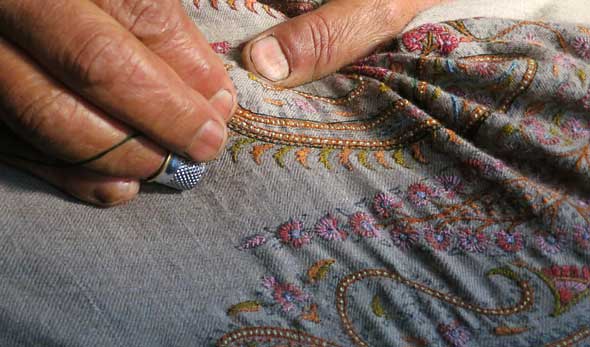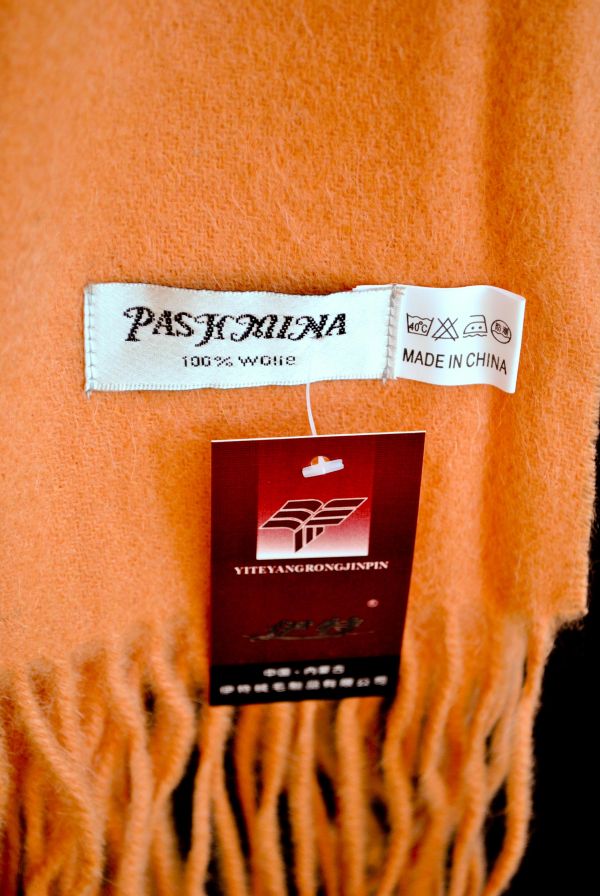A quality pashmina shawl is an excellent addition to any wardrobe. Because of confusion over terminology and misleading labling, though, finding a pashmina that's truly high quality isn't always so easy. Here are some tips to help you get the best pashmina your budget will allow.
What is pashmina anyway?
A lot of the confusion about what pashmina is comes from people using the phrase "a pashmina" to refer to any type of large, soft, lightweight wrap. Pashmina is, in fact, wool from the Capra hircus goat. The name pashmina is derived from the Persian word "pashm," meaning "inside" or "underside," due to the area the wool comes from. Although it's sometimes defined as high quality cashmere, actually pashmina and cashmere are the same thing.
A lot of the confusion about what pashmina is comes from people using the phrase "a pashmina" to refer to any type of large, soft, lightweight wrap. Pashmina is, in fact, wool from the Capra hircus goat. The name pashmina is derived from the Persian word "pashm," meaning "inside" or "underside," due to the area the wool comes from. Although it's sometimes defined as high quality cashmere, actually pashmina and cashmere are the same thing.
Quality material
So why is it some pashmina shawls go for $40 while others cost several hundred dollars? A lot of it has to do with the type of cashmere used to make the shawl. The highest quality pashmina comes from the upper chest and throat area of the goat. This wool is very soft, but it's also quite delicate. It takes great care and time to weave, which raises the price of any product made from it. Lower quality pashmina, on the other hand, is throat wool mixed with coarser wool from the belly and shoulders. Being tougher, this wool is easier to work with, so it takes less effort to weave. This is still considered pure pashmina, though. The most important factor is that the pashmina not be mixed with sheep's wool, which is noticeably coarser, and of course the pashmina is no longer pure.
So why is it some pashmina shawls go for $40 while others cost several hundred dollars? A lot of it has to do with the type of cashmere used to make the shawl. The highest quality pashmina comes from the upper chest and throat area of the goat. This wool is very soft, but it's also quite delicate. It takes great care and time to weave, which raises the price of any product made from it. Lower quality pashmina, on the other hand, is throat wool mixed with coarser wool from the belly and shoulders. Being tougher, this wool is easier to work with, so it takes less effort to weave. This is still considered pure pashmina, though. The most important factor is that the pashmina not be mixed with sheep's wool, which is noticeably coarser, and of course the pashmina is no longer pure.
To be of reasonable quality, a pahsmina shawl or scarf should be either 100% pashmina (cashmere) or a blend of 70% pashmina and 30% silk. Other ratios of pashmina and silk can also be found. There's nothing wrong with a pashmina/silk blend, so long as you know what you're getting. Just be aware that a pashmina shawl's sheen is no indication of quality; it just means the cashmere has been blended with silk.
Quality workmanship
Naturally, hand made items are generally of higher quality than assembly-line manufactured ones and the same goes for pashmina shawls and scarves. The better ones are hand woven and any embroidery or detailing such as tassels also done by hand.
Naturally, hand made items are generally of higher quality than assembly-line manufactured ones and the same goes for pashmina shawls and scarves. The better ones are hand woven and any embroidery or detailing such as tassels also done by hand.
Part of the quality of the workmanship also involves something that isn't done. A quality pashmina product will not need to have anything done to it to make it soft. If low quality cashmere is used, the shawl or scarf will have to be machine brushed or treated with chemicals to make it feel as soft as high quality cashmere. This harsh treatment stresses the fibers and reduces their life-span. Shawls treated this way will wear thin, ravel or tear easily.
Confusing labeling
Because pashmina is sometimes incorrectly defined as a blend of cashmere and silk, some unethical manufacturers label cashmere-silk blends as "pure pashmina." Pure pashmina is fairly expensive, though, so if the price seems suspiciously low for a supposedly pure product, that may be why. Also, stay away from so-called pashmina shawls and scarves that contain viscose. Viscose is a man-made material and, while it does have a silk-like sheen, it's not nearly as soft or strong as either genuine pashmina or silk.
Because pashmina is sometimes incorrectly defined as a blend of cashmere and silk, some unethical manufacturers label cashmere-silk blends as "pure pashmina." Pure pashmina is fairly expensive, though, so if the price seems suspiciously low for a supposedly pure product, that may be why. Also, stay away from so-called pashmina shawls and scarves that contain viscose. Viscose is a man-made material and, while it does have a silk-like sheen, it's not nearly as soft or strong as either genuine pashmina or silk.
The best way to get the highest quality pashmina shawl or scarf is to buy from a reputable company that knows the true definition of pashmina and produces hand-woven items. Don't be shy about asking questions. If a sales person tries to convince you that sheen is a sign of quality or admits the pashmina has been blended with "other natural fibers," such as sheep's wool, you'll know not to waste your money with them. Take the time to find a truly high quality pashmina product, though, and you'll be rewarded with a beautiful, comfortable wardrobe accessory that can be passed down for generations.

 width: 100%; height: 150px; background-size: 100%;
width: 100%; height: 150px; background-size: 100%;
























